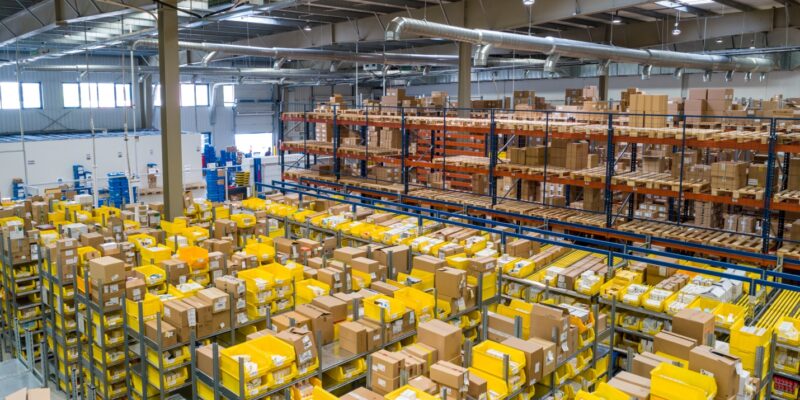There is a common misconception that warehouse management and inventory management are synonyms for optimizing a stock flow. Although the two have some similarities, they are different processes of supply chain operations.
In this article, we are going to help you get a better insight into both managing processes as we answer the following questions.
1. What is warehouse management?
2. What is inventory management?
3. What is the difference between warehouse and inventory management?
4. What do warehouse and inventory management have in common?
1. What is warehouse management?
Warehouse management refers to a set of operations used for product storage in the warehouse. It provides the tracking and logistics that help companies follow their inventory path from the moment it enters the facility to the moment it is sold, used, relocated, or becomes obsolete.
Warehouse management can be divided into seven processes:
- Receiving – checking and logging of the incoming items, placing them in bins, or sending them further
- Organizing layouts – placing fast-moving items closer to the doors, grouping items that are often bought together, separating similar items
- Picking – arranging items in a way that will help warehouse workers find them easily
- Packing – packing orders in appropriate packages, adding accurate content slips, and preparing packages for dispatching
- Shipping – placing ordered packages in shipping vehicles and providing adequate delivery manifest
- Managing returns – unloading returned items and checking the original order
- Inventory handling – manual counting and checking inventories on the spot, and providing data for supporting the predicted demand
Although warehouse management isn’t visible to customers, it still plays an important part in on-time delivery and customer service. It is also vital for a company’s productivity and return of investment (RIO).
2. What is inventory management?
Inventory management refers to a process of predicting orders, ordering, reception, and inventory distribution. The most challenging task for inventory management is to ensure a sufficient stock quantity – not too much, not too little.
Inventory management has many aspects:
- Stock storage maintenance
- Supervision over the number of products for sale
- Keeping the inventory records
- Projection of demand
Warehouse and inventory management are challenging tasks for many businesses, especially large ones, so it is not rare that they seek help from companies such as Modula which offers services of integrating modern storage solutions and up-to-date inventory management systems.
3. What is the difference between warehouse and inventory management?
The most tangible difference between warehouse and inventory management is in their management system complexity.
An inventory management system (IMS) is a bit simpler and includes the following:
- Tracking all inventory through all locations
- Providing information of a complete inventory overview
- Maintaining sufficient inventory levels for projected orders fulfillment
Warehouse management system (WMS) covers more specific tasks:
- Tracking inventory movement within the warehouse
- Creating reports on inventory status
- Picking, packing, and shipping products
- Guiding personnel through picking and packing for better efficiency
IMS serves to provide the total inventory quantity in one particular location, while the warehouse management system (WMS) separates warehouses into multiple departments and gives a full overview of the storage system inside the warehouse.
Simply put, IMS gives the information that a product exists somewhere in the warehouse, while the WMS can pinpoint where a specific item is placed in the warehouse.
Warehouse management reports are focused more on physical inventory, while inventory management reports are more concentrated on the financial element of managing stock.
Another important difference between warehouse and inventory management is the involvement of human resources.
While inventory management only deals with products and inventory, warehouse management focuses on organizing warehouse employees as well as shipping personnel.
4. What do warehouse and inventory management have in common?
Both warehouse and inventory management share a common goal of moving inventory from suppliers to customers in the most effective way possible, and both have their roles in storing, shipping, and rearranging stock.
We can safely conclude that, even though warehouse and inventory management work towards the same goal, they approach that goal from different perspectives as they use different methods to tackle inventory movement and organize warehouse workflow.










Comments